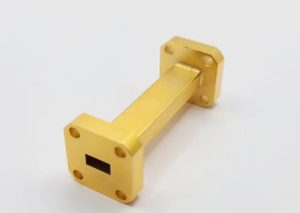What Is a Waveguide Straight?
A waveguide straight is a fundamental component in microwave and radio frequency (RF) systems, serving as the conduit for directing electromagnetic waves between different parts of a circuit. Precision-engineered to ensure the efficient transfer of energy, waveguide straights are crucial for maintaining signal integrity and minimizing losses in various applications from telecommunications to radar systems.

Essential Role in RF Transmission
Efficient Energy Transfer
The primary function of a waveguide straight is to transport electromagnetic waves with minimal attenuation and reflection. These components are typically rectangular or circular tubes made from conductive materials like copper or aluminum. The internal dimensions of the waveguide are critical and are carefully designed to correspond to the wavelength of the signals they carry, which usually range from 1 GHz to as high as 300 GHz in advanced systems.
Dimensional Precision
The effectiveness of a waveguide straight hinges on its dimensional precision. The width, height, and length must be meticulously calibrated to match the specific frequency of operation. For instance, a waveguide designed for use at 10 GHz will have different dimensions from one intended for 100 GHz. This precision ensures that the waveguide supports the transmission mode necessary for optimal performance, typically the fundamental TE10 mode in rectangular waveguides.
Applications Across Industries
Telecommunications
In telecommunications, waveguide straights are used to connect different sections of communication infrastructure, such as linking transmitters to antennas or antennas to receivers. Their ability to preserve the quality of the signal over distances is vital for the clarity and reliability of communications, especially in satellite and terrestrial broadcasting systems.
Radar and Sensing Technology
Waveguide straights are also integral to radar systems, where they are used to route high-frequency signals from the transmitter to the antenna and from the antenna to the receiver. The precision with which these components carry radar pulses directly affects the system’s ability to detect and resolve targets at significant distances.
Scientific and Medical Equipment
In the scientific and medical fields, waveguide straights are employed in equipment requiring precise directional control of RF energy, such as in magnetic resonance imaging (MRI) systems and particle accelerators.
Advantages of Using Waveguide Straights
Minimal Signal Loss
One of the chief advantages of using waveguide straights is their ability to minimize signal loss. Unlike cables that can introduce significant losses especially at higher frequencies, waveguides are capable of transporting signals with very low attenuation. This feature is particularly important in applications where maintaining signal strength and integrity is crucial.
High Power Handling
Waveguide straights can handle much higher power levels compared to other types of transmission lines like coaxial cables. This capability makes them suitable for high-power applications such as radar transmitters and industrial microwave systems.
Durability and Reliability
Constructed from metal, waveguide straights are highly durable and resistant to environmental factors such as temperature changes and humidity. This durability ensures reliable operation over long periods, which is essential for infrastructure and military applications where maintenance opportunities may be limited.
Waveguide Straight is more than just a passive component in RF and microwave systems; it is a critical building block that ensures the efficient and reliable transmission of energy across various applications. By enabling precise and stable wave propagation, waveguide straights contribute significantly to the performance and effectiveness of modern communication and radar technologies.